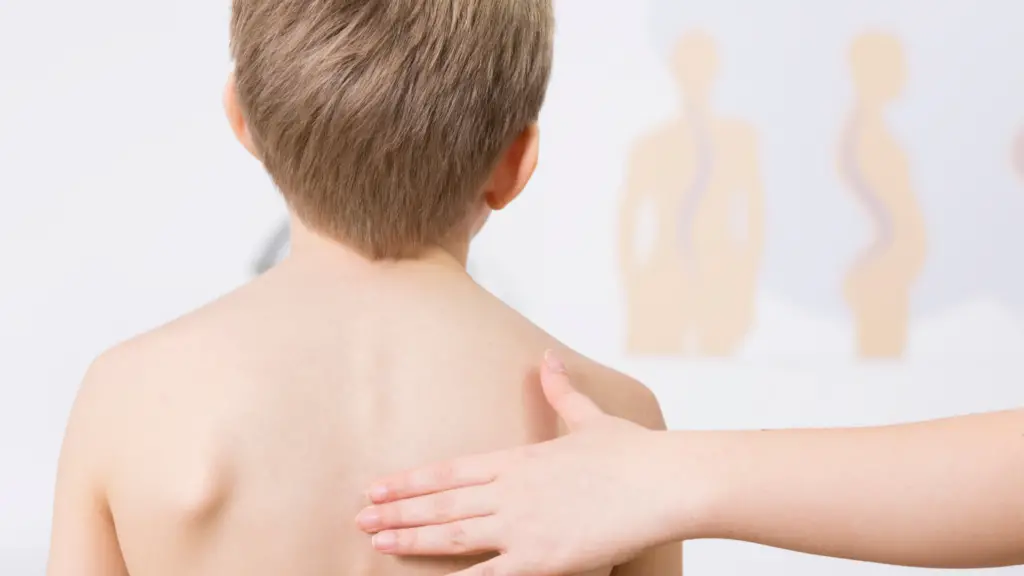This article is evidence-based, verified by Ashleigh Willis, a Neuroscience Ph.D. candidate.
Disruption to movement, balance, and coordination are characteristic of autism spectrum disorder. Children and adults with autism often have abnormal motor movements. These can manifest as clumsiness and abnormal gait. Many people with autism will often exhibit stereotypic behavior.
Stereotypic movement is a motor deficit associated with a variety of neurodevelopmental disorders. In autism, this disorder becomes apparent through repetitive behavior without a clear goal.
Sometimes this can result in constant motor movements such as head-banging. Scientists do not understand the causes of these movement abnormalities.
Another feature of autism is the inability to understand, predict, and imitate movement. This means that people with autism often struggle to mimic the actions of others. Movement prediction is also usually impaired to an extent.
This contributes to observable awkward movement but also impairs body language abilities. People with autism often find it difficult to express their feelings through movement.
They also struggle to understand the body language of others. Scientists speculate that this may contribute to some social deficits seen in autism.
Besides problems with movement, people with autism have hyperactivity. They also often carry a lot of tension in the body. This can contribute to feelings of restlessness . Potentially associated with this are problems with focus and concentration.
. Potentially associated with this are problems with focus and concentration.
It’s well established that people with autism have trouble with attentional control. They also have impaired self-regulation. There are likely many reasons for this, but hyperactivity may be the main contributor.
The symptoms discussed above are diverse. Symptoms like these can impact the lives of people with autism in a variety of ways. Moreover, due to the diversity of these symptoms, it can be hard to find suitable treatments. One emerging physical intervention is vibration therapy.
What is vibration therapy?
Vibration therapy was first invented as a general health practice. Vibration therapy was first implemented in the late 1800s. At the time, it was suggested that vibration therapy improved circulation.
Modern health practitioners think that vibration therapy can improve muscle and bone mass. Nowadays, there are many commercially available whole-body vibrations machines.
These are often marketed to athletes and fitness enthusiasts. Some research suggests that whole-body vibration can help with recovery and muscle soreness .
.
Aside from fitness claims, vibration therapy has been gaining popularity for movement-related disorders. This includes conditions such as Parkinson’s disease.
Vibration therapy can be whole-body or localized
Whole-body vibration will generally take place in a therapeutic setting. During the session, the therapist will ask the patient to stand or sit on a machine with a vibrating platform. The position which therapists suggest will depend on the needs of the individual.
Localized vibration therapy comes in the form of handheld vibrating devices. These are commercially available, and treatments can be carried out at home.
The principle behind vibration therapy relies on the idea that vibrations move from the equipment to your body. This is thought to cause muscle contractions and stimulate important bone cells.
How can vibration therapy help people with autism?
Recently vibration therapy has been used as a therapy for autism. Proponents suggest that vibration therapy can trigger a variety of benefits. They also suggest that these benefits extend beyond improvements in movement.
This emerging therapy may offer an easily implemented intervention. Case study reports indicated that many children with autism find the activity enjoyable.
We are often tempted to try anything to improve our condition or the condition of someone we love. But it’s essential to understand the science behind the therapy. There is limited research regarding the effect of vibration therapy in autism. We can also draw upon research into other conditions to inform us of potential benefits.
Let’s delve into some of the scientific research on vibration therapy and autism:
Vibration therapy may improve tactile sensory processing and reduce hypersensitivity
Children with autism often have abnormal tactile sensitivity. This means that they have an abnormal response to tactile sensitivity. They also exhibit increased pain sensitivity. A 2018 study investigated how vibration therapy might help these issues.
Their study assessed high functioning children with autism. The study showed that vibration therapy helped to decrease pain sensitivity. Vibration therapy also helped with tactile sensitivity.
While these results look promising, we must note the small sample size of the study. More critical, vibration therapy was included in a package of administered treatments.
This makes it unclear whether the results were entirely due to vibration therapy. It’s possible that these results could be due to the cocktail of therapies provided.
Whole-body vibration has variable results on stereotypic behavior
In 2011, researchers conducted a small study to investigate the effects of whole-body vibration on autism. The participants stood on a vibrational platform during down-time from other ongoing therapies. The movement was assessed 5 minutes before and 5 minutes after standing on the platform.
The researchers found that some stereotyped behavior decreased, but others remained unchanged. These results are positive but aren’t generalizable to the broader population.
This is because this study only included four young male participants. Larger-scale, controlled trials are required to investigate these effects further.
Whole-body vibration may improve gait speed and standing posture in children

A 2015 review investigated the effects of vibration therapy in children with cerebral palsy. The looked at the effects on gait and standing. These children didn’t have autism. But cerebral palsy can share some similar movement-related features with autism.
Scientists found that whole-body vibration improved gait speed and over motor function. The therapy may have positive effects on some elements of movement and posture .
.
Additional small-scale studies have suggested that vibration therapy may produce a calming effect. One study found that children who were exposed to vibroacoustic stimuli were calmer. This was assessed during stressful dentist appointments.
Other researchers suggest vibration therapy may be a useful therapy for children who are learning to chew. It may be that it can help to foster coordination.
They also indicate that vibration therapy is helpful to children who are learning spatial skills. These effects are evident in specific case studies. But these claims are quite speculative and don’t have much-supporting evidence.
The take-home message
Whole-body and localized vibration therapy seems to offer benefits to some physical conditions. There have been a few studies that suggest this could improve some movement in autism.
Early research also suggests that vibration therapy may have a calming effect . Some therapists suggest that this may reduce hyperactivity and promote social interaction. At present, there is not enough research to support these proposals.
. Some therapists suggest that this may reduce hyperactivity and promote social interaction. At present, there is not enough research to support these proposals.
Never-the-less, vibration therapy is easy to implement. Some forms can also take place at home. There have been no reported adverse effects of vibration therapy relating to children.
Case studies and personal testimonies suggest many benefits associated with vibration therapy. Hopefully, these benefits will be supported by clear scientific evidence in the future.
Benefits Of Art Therapy For People With Autism 🖌️🎨

Ashleigh Willis is a final year Ph.D. candidate in Neuroscience at the University of Glasgow. Her research investigates the genetic and environmental contributors to mental health and neurodevelopmental conditions. Ashleigh has built research collaborations with McGill University and received specialist training at the Centre for Neuroscience at Montreal General Hospital, McGill University Health Centre. She is also an active member of the Society for Neuroscience. Ashleigh holds an Honours in Psychology, an MRes in Neuroscience, and is fascinated by the neuronal circuits which make us who we are. Ashleigh is passionate about providing a deeper understanding of mental health conditions and sharing an accurate and de-stigmatizing message through talks for organizations such as TEDx, Pint of Science, and the Scottish Funding Council.
You can follow Ashleigh on her Youtube channel here
References
- Alam MM, Khan AA, Farooq M. Effect of whole-body vibration on neuromuscular performance: A literature review. Work. 2018;59(4):571‐583. doi:10.3233/WOR-182699

- Bressel E, Gibbons MW, Samaha A. Effect of whole body vibration on stereotypy of young children with autism. BMJ Case Rep. 2011;2011:bcr0220113834. Published 2011 Apr 19. doi:10.1136/bcr.02.2011.3834
- Gowen E, Stanley J, Miall RC. Movement interference in autism-spectrum disorder. Neuropsychologia. 2008;46(4):1060‐1068. doi:10.1016/j.neuropsychologia.2007.11.004

- Huang M, Liao LR, Pang MY. Effects of whole body vibration on muscle spasticity for people with central nervous system disorders: a systematic review. Clin Rehabil. 2017;31(1):23‐33. doi:10.1177/0269215515621117

- Riquelme I, Hatem SM, Montoya P. Reduction of Pain Sensitivity after Somatosensory Therapy in Children with Autism Spectrum Disorders. J Abnorm Child Psychol. 2018;46(8):1731‐1740. doi:10.1007/s10802-017-0390-6
- Samayan, K., Dhanavendan, K., & Nachiketa, R. (2015). Research. Allied health professionals’ perceptions of the role of sensory integration therapy in managing challenging behaviours. International Journal of Therapy & Rehabilitation, 22(4).
- Saquetto M, Carvalho V, Silva C, Conceição C, Gomes-Neto M. The effects of whole body vibration on mobility and balance in children with cerebral palsy: a systematic review with meta-analysis. J Musculoskelet Neuronal Interact. 2015;15(2):137‐144.
- Shapiro, M., Melmed, R. N., Sgan-Cohen, H. D., & Parush, S. (2009). Effect of sensory adaptation on anxiety of children with developmental disabilities: a new approach. Pediatric dentistry, 31(3), 222-228.
- Stania M, Juras G, Słomka K, Chmielewska D, Król P. The application of whole-body vibration in physiotherapy – A narrative review. Physiol Int. 2016;103(2):133‐145. doi:10.1556/036.103.2016.2.1

